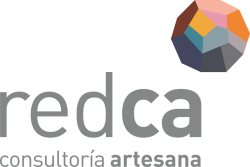 Lenny Mandonca y Hayagreeva Rao entrevistan a Tim Brown, de IDEO, en The McKinsey Quarterly. Para quienes andamos revoloteando en torno a la innovación abierta y a nuevos modelos de empresa, es muy interesante dedicarle un tiempo a leer lo que cuenta el presidente y director general de IDEO. En ella Tim Brown habla de cómo estimular la creatividad y eliminar las barreras que habitualmente la atenazan mediante el uso de determinados incentivos. Entre los contenidos de la entrevista, destacamos algunos que me han parecido relevantes.
Lenny Mandonca y Hayagreeva Rao entrevistan a Tim Brown, de IDEO, en The McKinsey Quarterly. Para quienes andamos revoloteando en torno a la innovación abierta y a nuevos modelos de empresa, es muy interesante dedicarle un tiempo a leer lo que cuenta el presidente y director general de IDEO. En ella Tim Brown habla de cómo estimular la creatividad y eliminar las barreras que habitualmente la atenazan mediante el uso de determinados incentivos. Entre los contenidos de la entrevista, destacamos algunos que me han parecido relevantes.
Curioso, en primer lugar el enfoque de la innovación a través de proyectos:
So innovation is not a continuous activity; it’s a project-based activity. If you don’t have a process for choosing projects, starting projects, doing projects, and ending projects, you will never get very good at innovation. Projects need some form—you call them something; you run them in a certain way; you fund them in a certain way. That sounds simple, but, actually, a good process for getting projects going and done is often not obvious to companies.
También acude a rescatar el papel de los senior manager en la innovación. Si Gary Hamel les de estopa por los cuatro costados, esta no parece ser la postura de Tim Brown cuando dice:
It’s often the role of senior leadership to defend new ideas until they’re actually out in the marketplace and able to stand up for themselves.
Otro aspecto es la necesidad de planteamientos convergentes y divergentes a lo largo del proceso de la innovación. Esto es más que evidente cuando se plantea en el continuo del tiempo. Las personas tenemos mejores competencias para un enfoque u otro. Pero hacen falta ambos y no es fácil generar el contexto adecuado para que se den en los momentos adecuados. Y, claro, el problema habitualmente tiene que ver con lo incómodos que se sienten los gestores con la divergencia.
The innovation process is a series of divergent and then convergent activities—a very simple concept, but one that a lot of leaders used to managing efficient processes in their businesses struggle with. By “divergence,” I mean a willingness to explore things that seem far away from where you think your business is today. The discomfort that a lot of business leaders have with innovation is with divergence.
La necesidad de incrementar la creatividad no sólo atañe a las empresas. Tim Brown considera esto un asunto de grandes políticas. Para él aún no se dispone de la infraestructura suficiente para que las personas generemos contenidos que complementen los de las empresas. En cualquier caso, toma el ejemplo de los países escandinavos para afirmar que hace falta un esfuerzo supraempresarial para elevar la capacidad creativa de las personas.
Right now, though, the level of facility that many users have in generating any kind of idea isn’t that high. So I think a competitive issue for nations in the future will be the ability of the general populace to generate and develop ideas. It didn’t really make much of a difference in the past, because you couldn’t bring all those people to bear on innovation. But in the future, we will be able to do just that. Countries—the Scandinavian countries, for instance, that are investing huge amounts of money in education to make their general populace more creative—will find that this really pays off.
Referente a los estímulos para incrementar la innovación, resulta revelador que acuda a la misión de la empresa como combustible para el proceso. Es lo mismo que planteaba Mitchel Baker en otra entrevista aquí en The McKinsey Quaterly para explicar la potencia de Mozilla. En aquel caso, se trataba de conseguir un Internet libre. Las empresas tienen que bucear en los motivos que las justifican si quieren disponer de fuerza innovadora a su alrededor.
In the end, all businesses exist to serve some kind of human purpose. If you can’t somehow frame what you do in terms of having an impact on the world, I don’t see how you can have a very effective business.[…]
On an organizational level, we’re looking much more closely than we did ten years ago at the social impact of the work we do. We’re attempting to measure how much of our work is in domains we care about, like sustainability, health care, and social-impact work—which we define as work intended to benefit the socially disadvantaged, whether in developed economies (on issues such as housing and education), or in developing economies (on issues such as «smallholder» agriculture, disease eradication, and access to health care services). We’re trying to measure that so we can shift the balance a little bit toward socially oriented work.
En fin, la entrevista se lee en diez minutos y seguro que te quedas con alguna idea útil. Que tengas buen día.

